Welcome to Waimangu Volcanic Valley, the youngest geothermal valley in the world!
Here, you can experience a unique history and legacy and learn about the beginnings of our world. You’ll be amazed by the amazing volcanic craters, enormous hot water springs, and beautiful geothermal features. Don’t forget to watch for rare and unusual plant life and brightly colored microbiology.
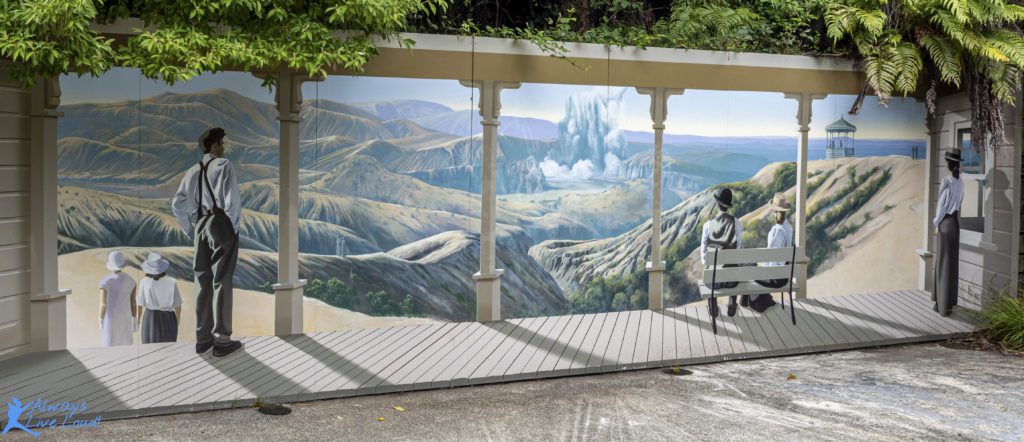
When you visit the park, you’ll be taken on a journey of discovery where you’ll hear stories about the Mt Tarawera volcanic eruption and the people affected by it. You’ll also learn about the landscape changes that created Rotorua’s geothermal park.
We can’t wait for you to explore this incredible place!
Some Of The History

On June 10th, 1886, Mt Tarawera and Lake Rotomahana erupted, causing explosions that led to the extinction of all life and the splitting of the land 17 kilometers from the mountain.
By 1900, a new lake had formed in one of the eruption craters, with a black discharge. The name ‘Waimangu’ means ‘Black Water’ in the Maori language, derived from the word ‘Mangu’ which means black. This name is inspired by the new lake in the area, which looks black in color. The geyser in the region, which would throw up mud and ash, created a black appearance that also contributed to the name.
Over time, the area experienced several other eruptions as well.
By 1915, the region surrounding Lake Rotomahana began to see the first plants colonize, indicating that life was ready to take over the area once again.
Where Is Waimangu Volcanic Valley?
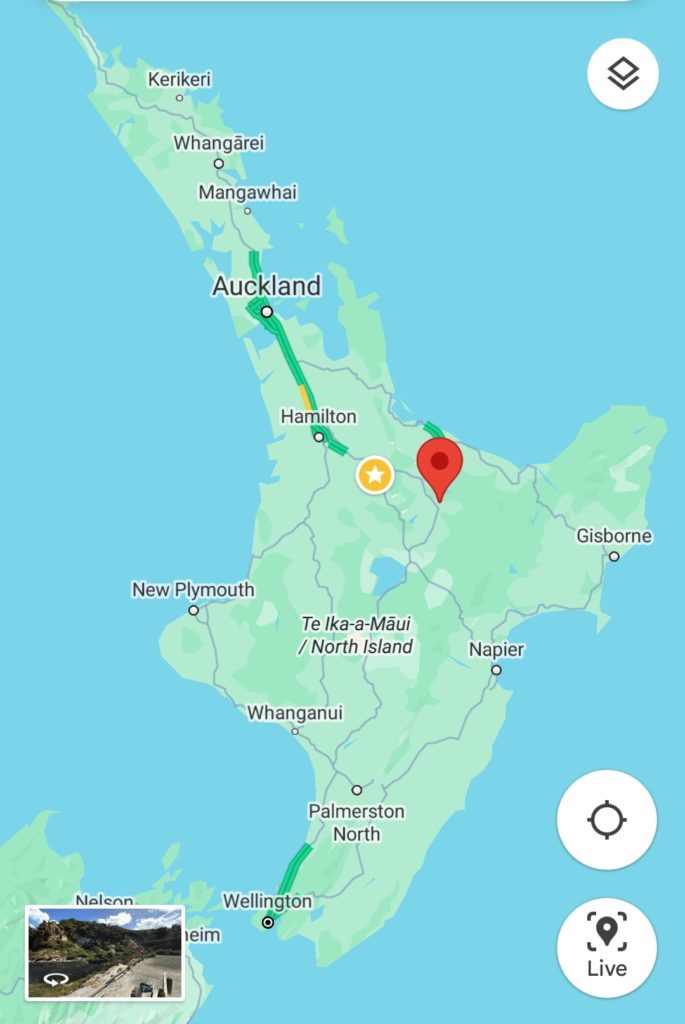
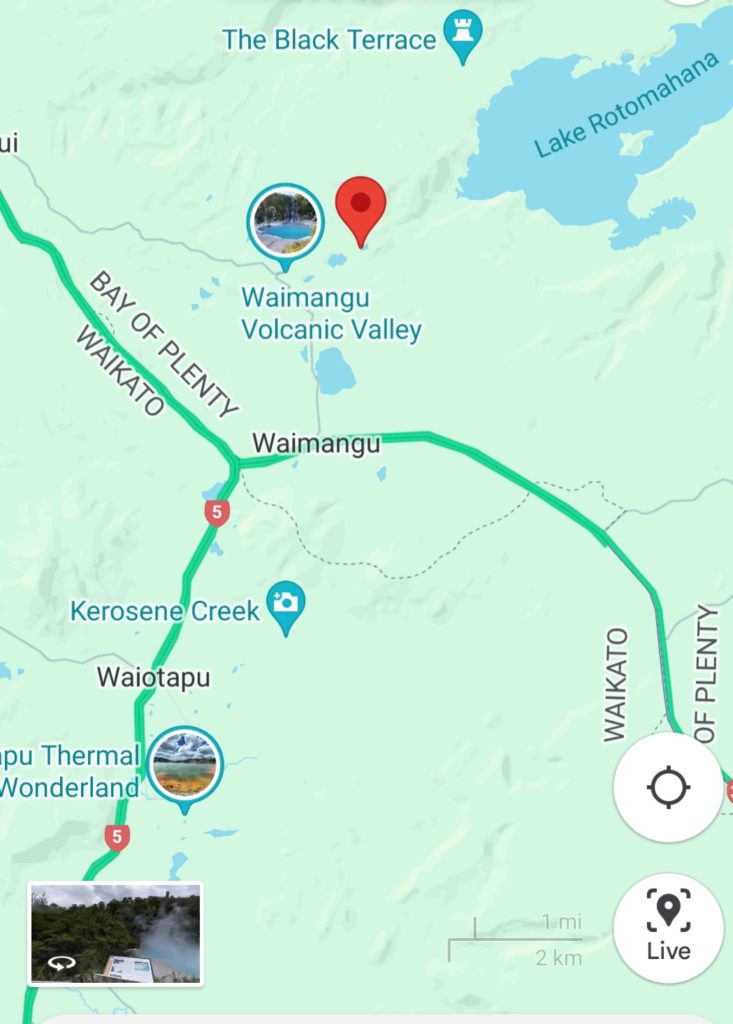
Waimangu Volcanic Valley is a large geothermal park near the Bay of Plenty area, approximately 20 minutes from Rotorua.
During our visit in February, the weather was great, and we took a pleasant walk that lasted approximately 4 hours.
The Valley Walkway
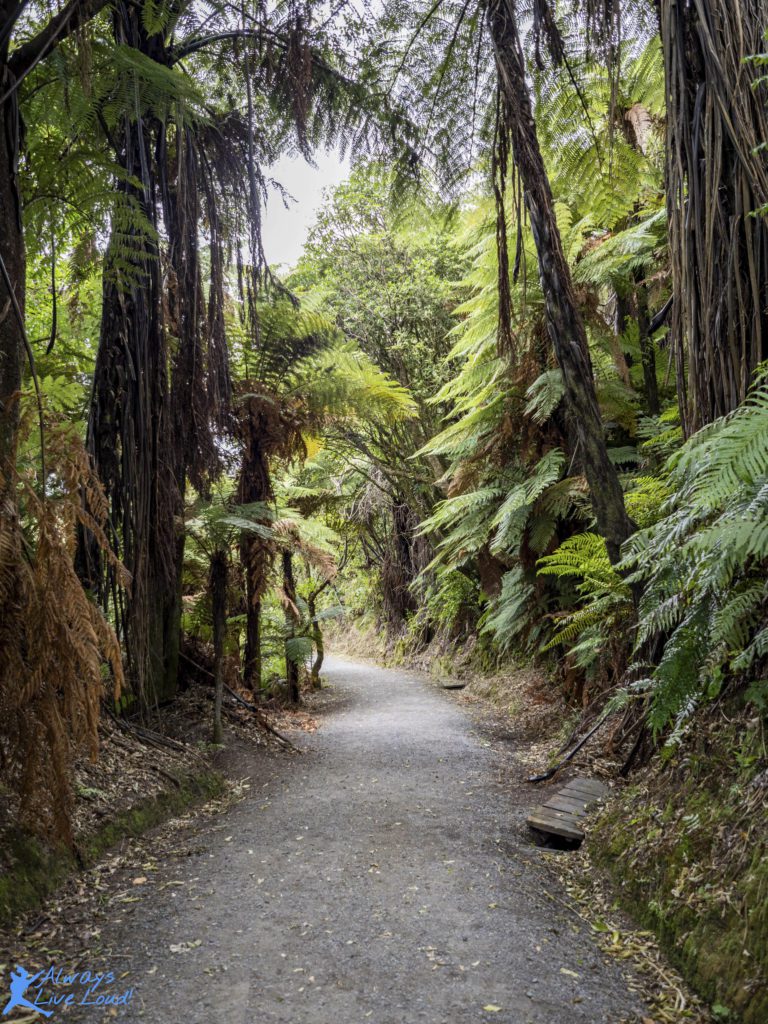
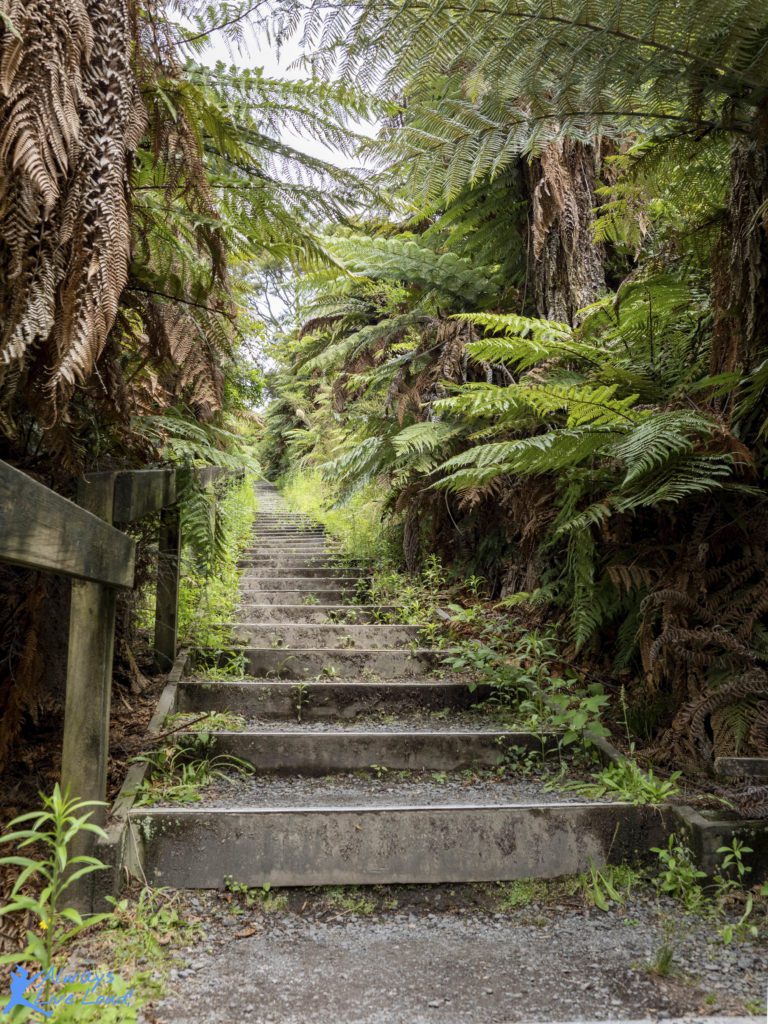
The Walk in the Valley is quite an extended walk, which took us around four hours to complete.
However, we took our time to read all the information available and enjoy the stunning views.
The park has three bus stops along the route, so you can return if you don’t feel like continuing or if the kids are not enjoying the walk.

This walk requires a certain level of fitness, as there are uphill and downhill sections and stairs.
Nevertheless, there are plenty of benches to rest and take in the scenery.
Points of interest
Southern of the Valley
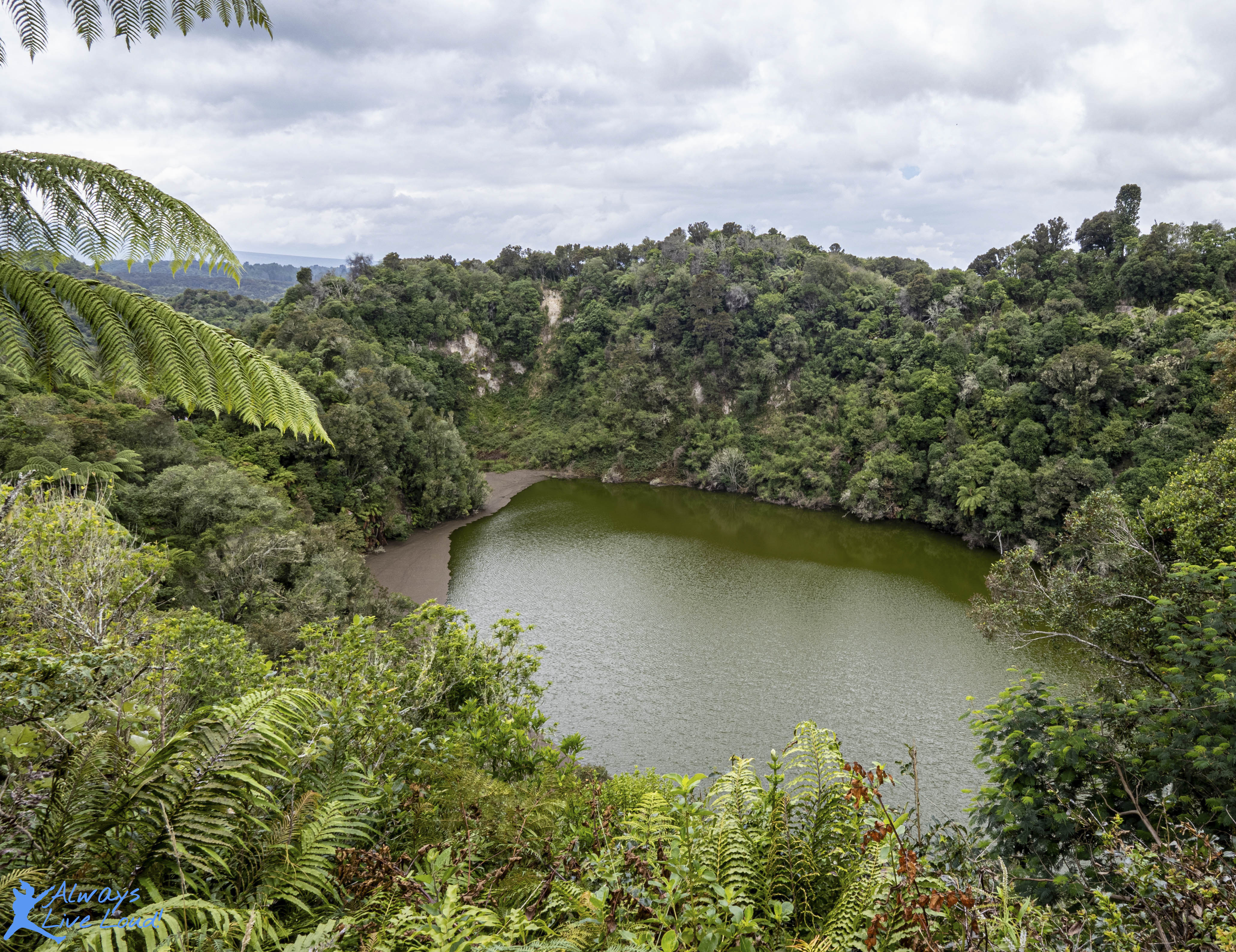
After the 1886 eruption, a crater was formed in the southernmost area. The depth of this crater is 50 meters. It has remained inactive since the initial eruption.
A shallow lake, also known as the emerald pool, is situated there.
The lake is cold and has a few small mud pools and warm ground at its northeastern end.
Frying Pan Lake lookout

Echo Crater’s western basin erupted on April 1, 1917, destroying a lodging and killing two people.
The crater filled with water created Frying Pan Lake, the world’s largest hot spring, covering 38,000 square meters.
The lake’s average temperature is 55 Celsius (131 Fahrenheit), with a depth of six meters (19.6 feet).
Echo Crater and Frying Pan Lake
The lake has a PH of 3.5 and is acidic.
Bubbles from carbon dioxide and hydrogen sulfide gas in the lake create an illusion of boiling, but real boiling occurs in the vents of the lake bed. The temperature of the lake body is cooler due to the effects of evaporation, conversion, and radiation of its heat.
Hot Water Creek and Springs
The Frying Pan Lake overflows through a narrow opening at a temperature of approximately 50 degrees Celsius (122 degrees Fahrenheit) with a flow rate of around 110 liters (29 gallons) per second.
As the stream moves along its border, it creates deposits that contain traces of elements such as antimony, molybdenum, arsenic, and tungsten. These minerals, along with blue-green algae, contribute to the stunning colors of orange, brown, green, and yellow that can be seen around most of the springs.
Bird’s Nest Terrace
The boiling springs create small silica terraces where different colored algae grow. The colors of the algae change depending on the temperature of the outflow from the springs. Blue-green algae can’t survive in temperatures over 75 Celsius (167F).
Inferno Crater Lake
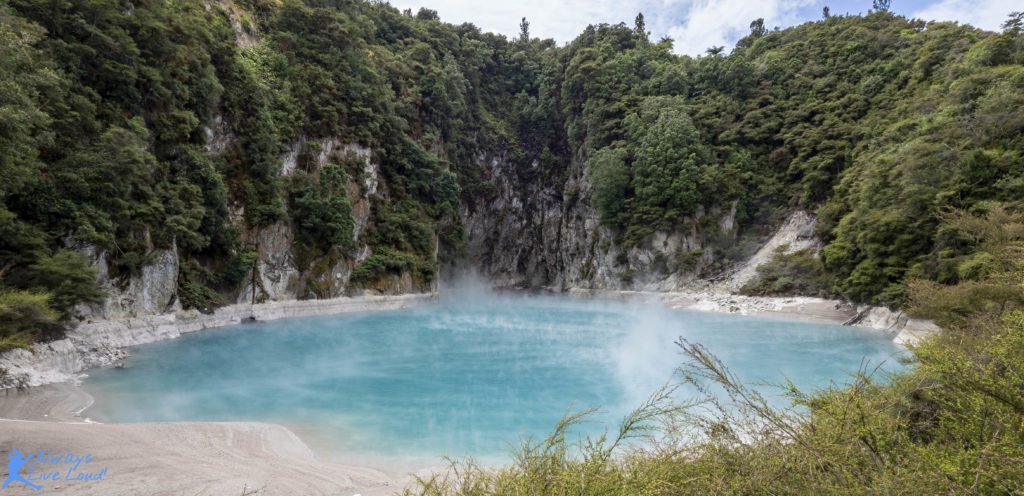
Waimangu is a pale blue lake in a crater formed on Mt. Haszard in 1886.
The lake’s water level follows a complex cycle and overflows for 2-3 days. It is trumpet-shaped and has a depth of 30 meters. During overflow, the temperature can reach 80°C, and the water has high acidity.
Inferno Crater, the world’s largest crater, is not visible as it is at the bottom of the lake.
Kaolin Slope
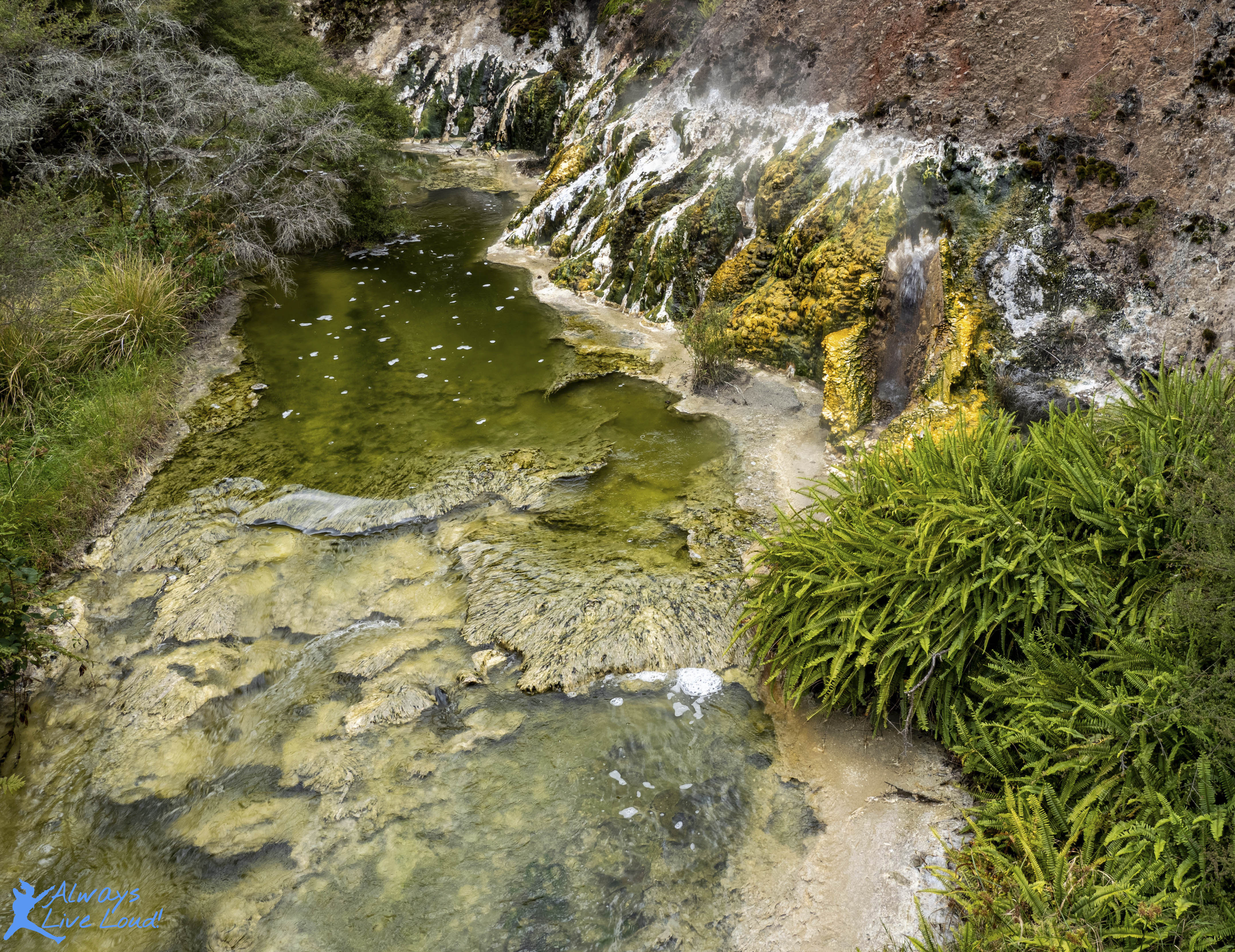
The white clay visible here is the type used in porcelain production. It is formed when the heat and gases in steam gradually change the solid rock of the hill.
Hot Springs
Plants grow in a special place that has hot springs and steam vents. The area is warm and humid, and mosses, ferns, and lichens thrive there.
Tarawera Volcano and Lave View
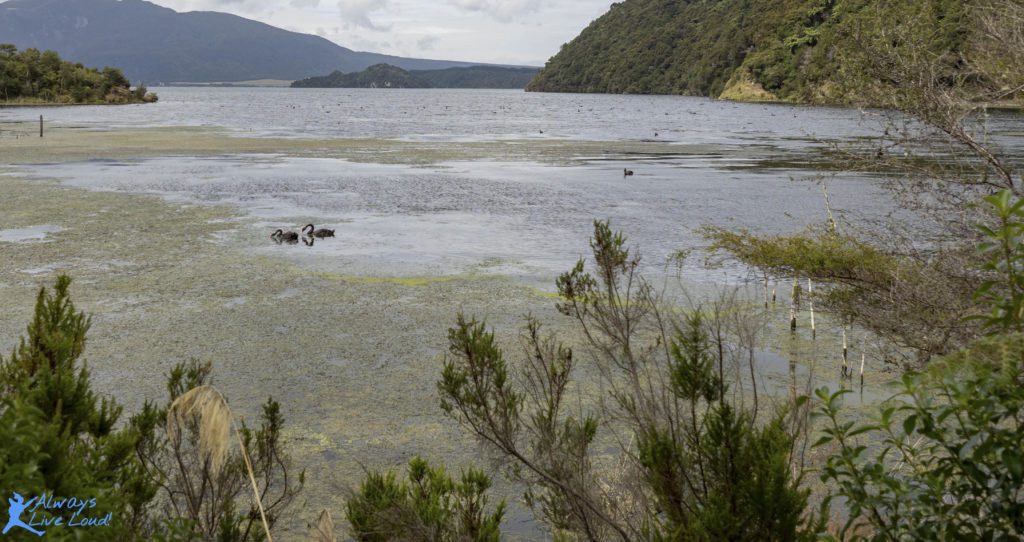
What a beautiful sight! From the 1974 boat jetty site, you can see the majestic Tarawera volcano and Tarawera Chasm, also known as Red Crater (which formed in 1886), rising beyond the serene Lake Rotomahana.
This lake is a beautiful bird sanctuary where you can spot many species. Today, we’re lucky enough to see a lot of black swans. Enjoy the view!
Is Waimangu Volcanic Valley worth visiting?

Volcanic Valley is a place that is both historically and naturally significant. You can easily spend a whole afternoon walking around and exploring the area. Take your time to appreciate the stunning colors, the natural wonders, and the peaceful surroundings.
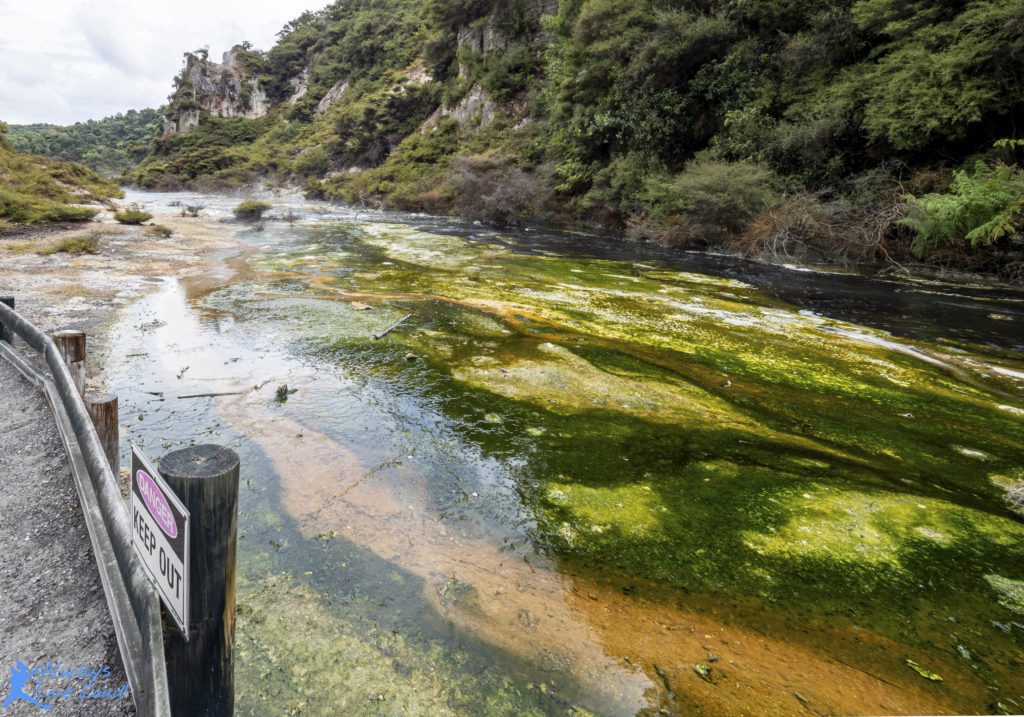
The entrance fee is reasonable, and we chose to do the self-guided tour, which costs NZD 46 per adult, NZD 16 per child, and NZD 110 per family. You can also buy other tickets, such as a boat cruise on Lake Rotomahana, which we might try next time. You can find more information about these different options on the Waimangu Volcanic Valley website.
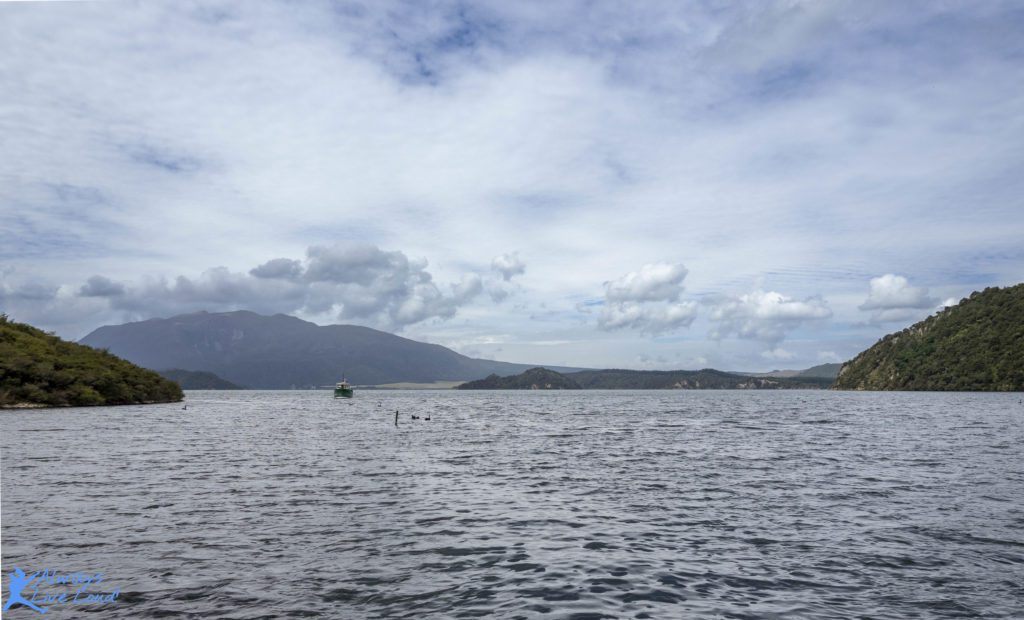
The Walk can take as long as you like. It took us around four hours to complete, as the park is divided into three sections with three bus stops that pick you up and take you back to the entrance. The shuttle bus runs approximately every hour, so make sure to check the Self Guided Walking Tracks and hike for more information.
So…Would I recommend visiting the Valley?
Absolutely. Can you believe that this valley used to be a barren wasteland of ash and mud caused by a volcanic eruption 138 years ago? Today, it’s a paradise, covered in lush greenery and offering some of the most breathtaking views you’ve ever seen of hot springs and multicolored algae. The eruption even made the lake in the area more prominent. Seeing this transformation over time is something special. You have to go see this wonder for yourself!

